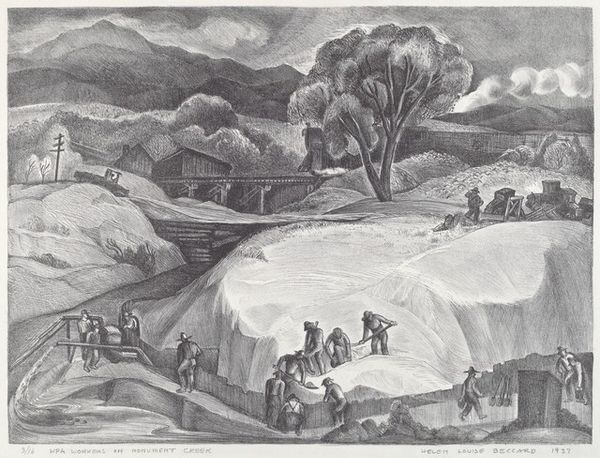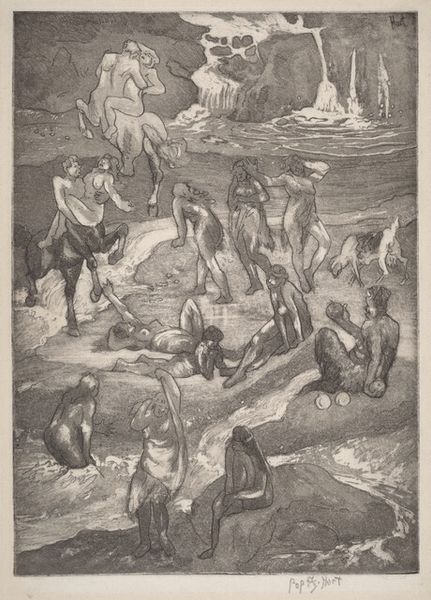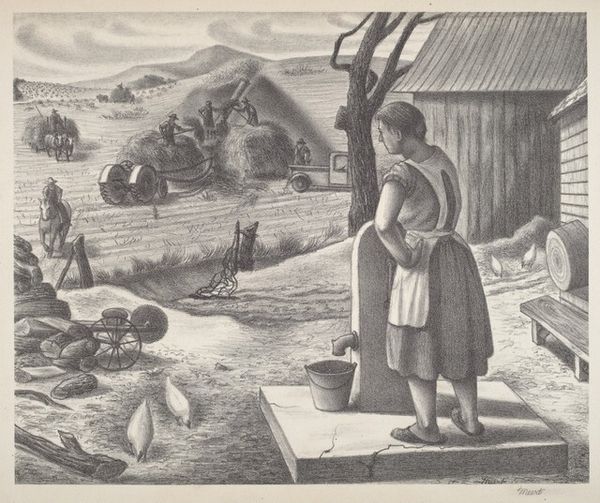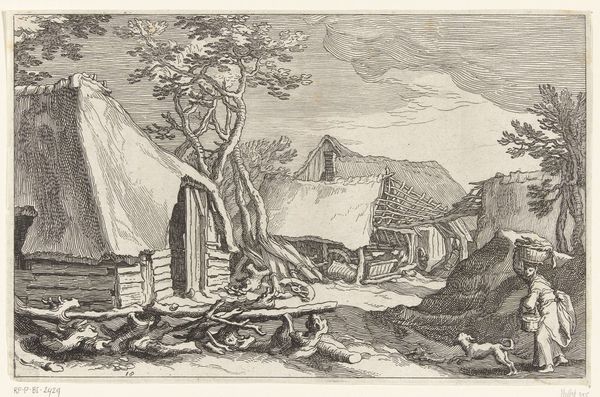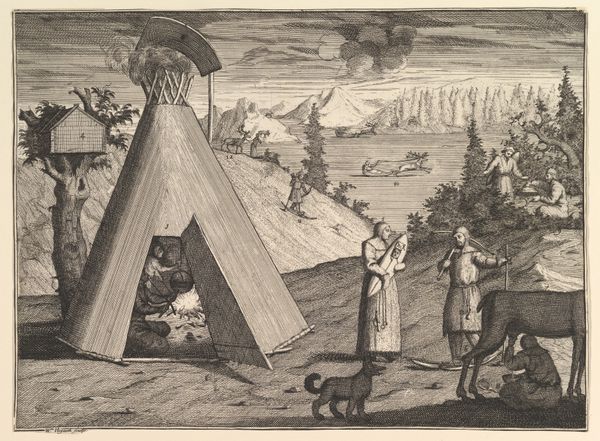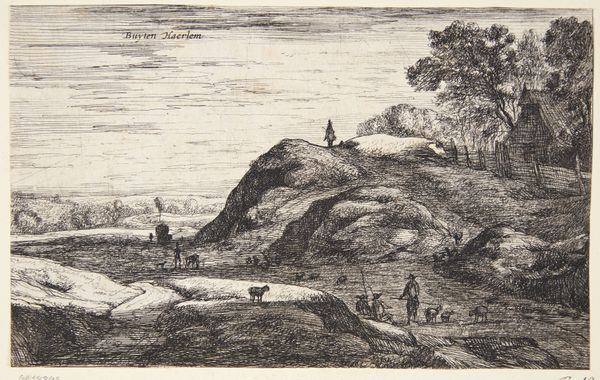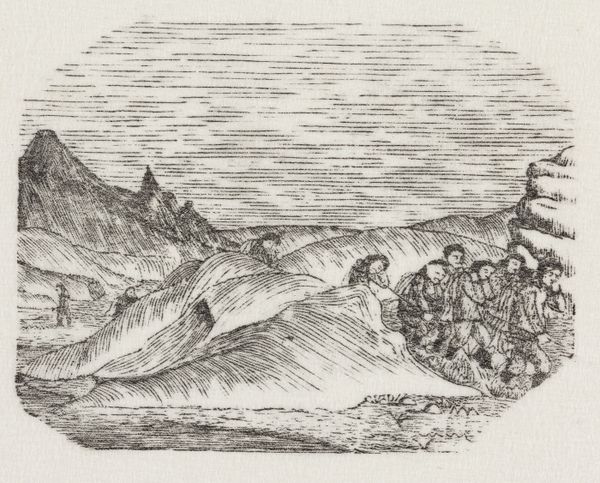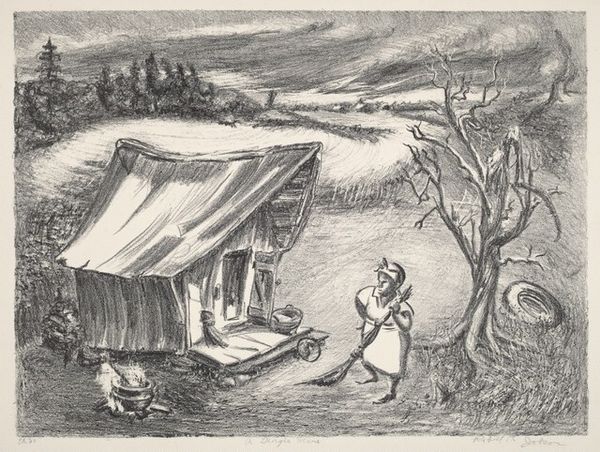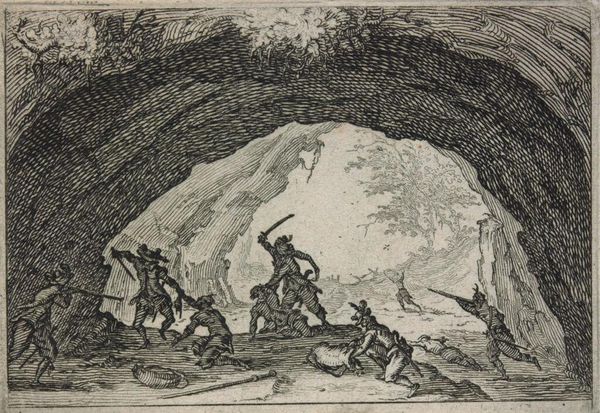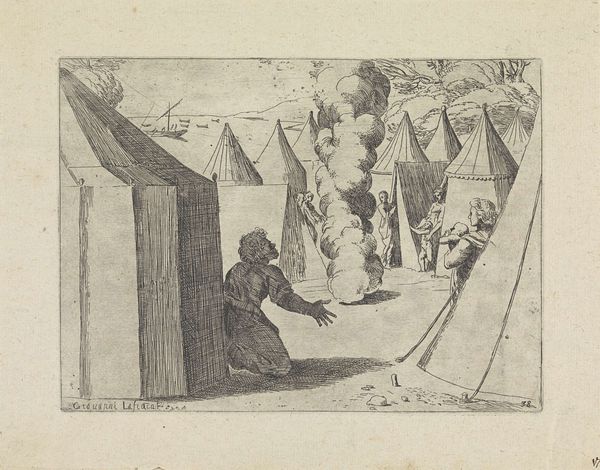
drawing, print, ink
#
drawing
#
ink drawing
# print
#
pen sketch
#
landscape
#
figuration
#
ink
#
mexican-muralism
#
genre-painting
#
realism
Copyright: National Gallery of Art: CC0 1.0
Curator: This is Alfredo Zalce's "Salt Deposits of Celestién," created in 1945. It's rendered in ink, a medium well-suited to the depiction of repetitive labor, which is a dominant theme here. Editor: My immediate impression is the overwhelming sense of industry. It's stark but somehow elegant, all those tiny, repetitive marks creating these monumental salt mounds. It's an organized chaos, wouldn't you say? Curator: Absolutely. The pyramids themselves echo ancient forms of forced labor and their symbolic connections to early statecraft. What kind of cultural context did Zalce draw from? Editor: It's crucial to remember that this piece emerges from the post-revolutionary Mexican Muralist movement, which glorified ordinary laborers. Zalce was concerned with elevating this genre and showcasing that physical work gives structure to these figures. The use of black ink mirrors folk art and the aesthetics associated with Posada. Curator: I notice the deliberate use of hatching and cross-hatching. This must speak to the arduous physical activity and the collective efforts involved in salt extraction. I'm particularly curious about that small machine visible. Do you suppose that it stands as an implicit critique, pointing towards the possible alienation caused by mechanization? Editor: Interesting point. The small scale is definitely important. It could indeed signify the early stages of industrialization impacting traditional communal work but also could reflect the importance of shared cultural beliefs and unity in the wake of national changes in post-war society. Look at those repeated triangular shapes in the distance and closer: perhaps mirroring ancestral worship too, and indigenous forms. Curator: I find myself drawn to how such an everyday material – salt – is made to appear monumental, almost spiritual. A vital resource but also a poignant illustration of human labor and transformation. Editor: Exactly. Zalce uses symbolic representation to tie the industry together, but he really highlights the value of the common workers and the deep ancestral symbols in a country still shaping its unique modern voice. It seems he’s advocating to preserve heritage while facing new technology, and he emphasizes unity to reach mutual growth. Curator: Indeed. Looking closer at Zalce’s marks now, the materials carry even more emotional weight in capturing a historic period of both conflict and innovation. Editor: A truly thought-provoking piece.
Comments
No comments
Be the first to comment and join the conversation on the ultimate creative platform.
